Decorating Exposed Pipes in My Small Half Bath
How to Hide Exposed Pipes: Creative Ways to Cover & Conceal
Updated: | Categories: Interiors

Maybe you bought a new house or are looking to remodel a few rooms. Finding creative ways to hide exposed pipes is tough, especially if you've never been introduced to them first. It's hard to think outside of the box!
Fortunately we've all put our heads together online and shared all the various ways to conceal pipes, whether on the exterior of your home, in your basement ceiling, in the laundry room, or in the bathroom.
What's nice is they're all fairly cheap to get done and the differing methods can be adjusted for everyone's budget.
Let's look at the 12 best ways to cover pipes. Rather than try to break up the methods across each room, I'll simply list them out and you can apply the ones that make sense for your personal situation.
12 Creative Ways to Hide Plumbing Pipes
Plumbing isn't going anywhere and unfortunately sometimes, especially in older homes or in big cities where the structures are permanent and made of brick as an example, lots of piping and air conditioning ducts are added on the exterior of our walls.
It'd be preferable if they were built inside the walls but what can you do...
Well, here's what you can do! You can get creative and work these exposed pipes into the decor of the room or create a way to hide them behind or within a functional (and attractive) piece of furniture or decoration. Let's jump into it.
Make the Plumbing Pipes Stand Out (or Blend in)
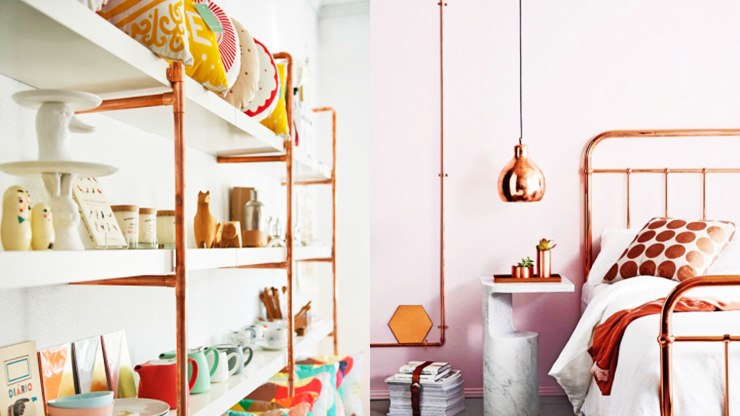
Let's start with this because it's the easiest and actually in fashion now. It's chic to have exposed plumbing these days and many people consider it a feature.
Though some people will paint them the same color as the wall behind them to make them blend in, making them pop visually is a much cooler option, using a complementary color to paint them or incorporating the same pipes around the room in other places.
Alternatively, you can create decorative pipe covers that can even add thermal insulation to air conditioning ducts. This works for more rustic and country homes more than modern and minimally designed rooms.
I've seen people hang fake foliage, like leafy vines, along them too. It can bring some nature and color into your design.
Build Shelving to Hide the Pipes
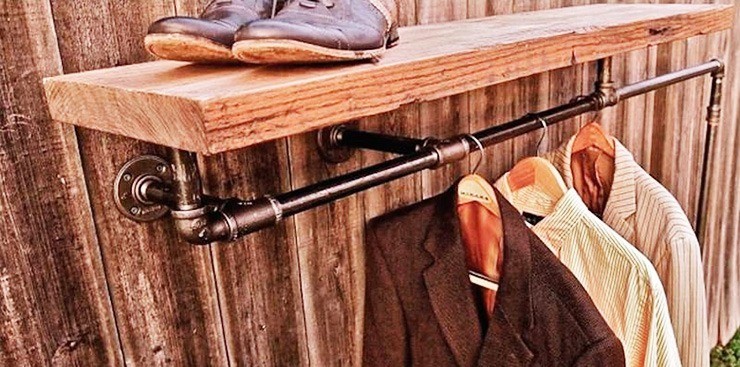
Depending on where these pipes are running, like vertically down a small nook, you can purchase or build a book shelf to hide them.
If you build it yourself you can make it floor to ceiling and create a cavity in the shelving that leaves room for the pipes without eating up extra floor space.
What's nice about this method is the shelves can then be used to hold books, photo frames, trinkets, and anything else that's a conversation piece that will completely distract anyone from noticing that there might be piping behind it.
Use Decorative Pipe Covers
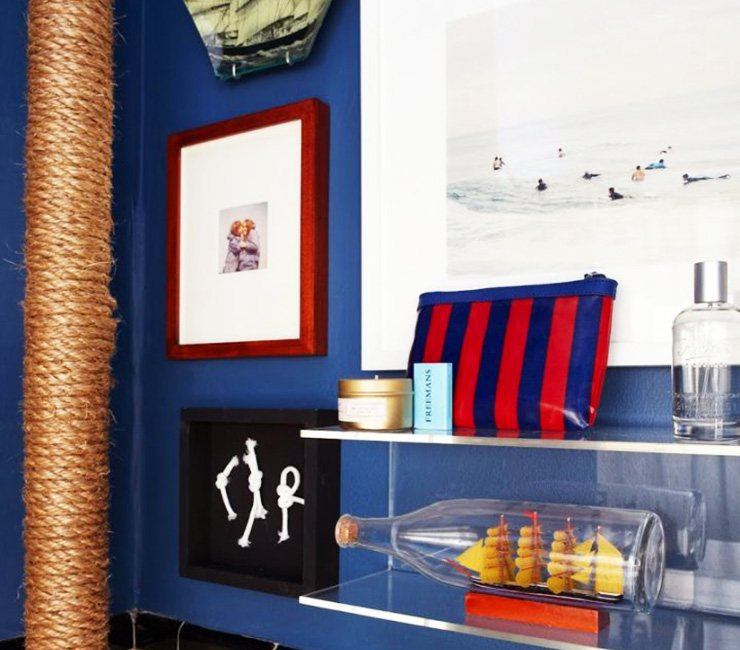
Some people, depending on their room's theme, will come up with interesting solutions involving pipe covers. Imagine a room with a beach theme.
You have wallpaper borders with lighthouses, paintings of beach scenes, an anchor on the wall, etc. You could wrap these exposed pipes with rope and it would look perfect.
If you're working in a child's bedroom, perhaps a little girl, you could paint them like a candy cane or wrap them in cloth designed that way.
You could turn vertical ones into fake trees and include branches and leaves near the ceiling. Just get creative and you'll think up something sweet.
Sink Skirts & Cabinets Can Hide Bathroom Pipes
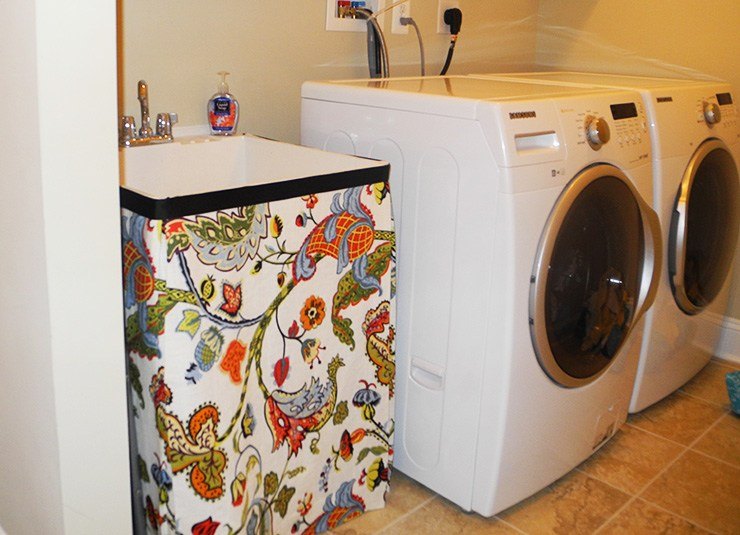
If you have a laundry room or bathroom with the type of sink or types of toilets that doesn't have cabinetry under it, then you likely also have plumbing pipes and valves showing.
If you have the tools and skills, you can build custom cabinetry to hide them and create a space you can utilize to store cleaning brushes and sprays.
Another cheaper option is to head to the fabric store and pick up some fabric that matches the room and sew a sink skirt.
I'd recommend installing a curtain rod in front of the sink if possible to attach the skirt to, but you can get creative with suction cups or anything else you can think of that I can't.
Box the Pipes In With Wood & Paint
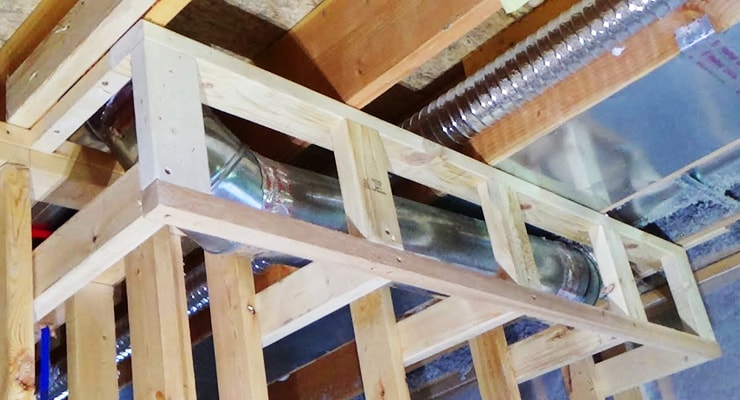
We mentioned painting the pipes, but sometimes you just have a single, lone pipe running up the corner of a room. Many people choose to box it in by building a small wooden frame around it.
This is inexpensive and the cuts can be made at the hardware store for you, usually. Consider using a drywall alternative while you're at it. It might inspire some other ideas in terms of decorative value.
Simply frame it in, seal the edges with caulk, let it all dry, and then you can paint this new box cover the same color as the wall it's against. Don't forget to add trim to the bottom and top. This is easy, looks fine, and adds a bit of a three dimensional aspect to the room.
Add Some Interesting Joints & Curves
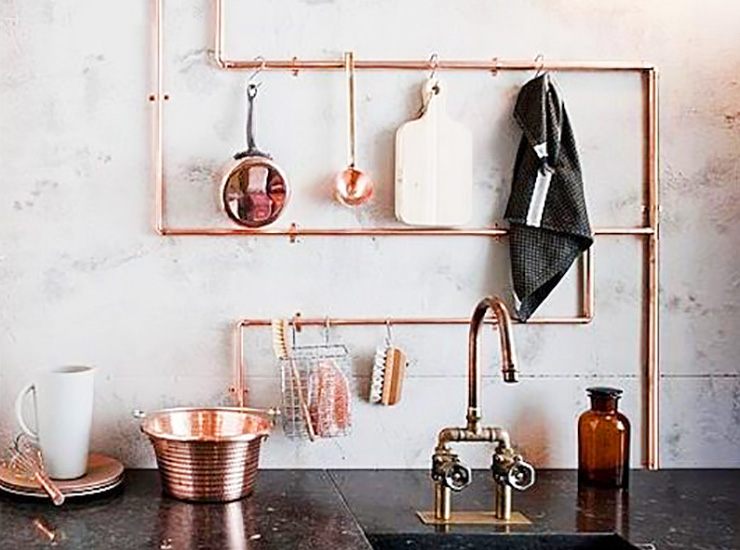
Perhaps you want to leave the pipes exposed and even in their natural, industrial state, but you don't like where they are. If you're handy (or you can hire a plumber or pipe fitter), you can install joints to turn them 90 degrees with fittings and make them flow wherever you want.
If done right, they can even become places to hang towels or various types of spoons, for example.
The idea is to make them create interesting patterns along the wall or to route them away from the location you don't want them in.
If you want to hire a metalworker you could get real crazy here. Just remember to turn off the water and empty the pipes before you open them up.
Make sure you consult an engineering professional so you aren't messing up any pressure, flow rate, drainage, or temperature. Check to see if you need any tube cleaning or a new gasket while they're open.
Make the Pipes Serve a Functional Purpose
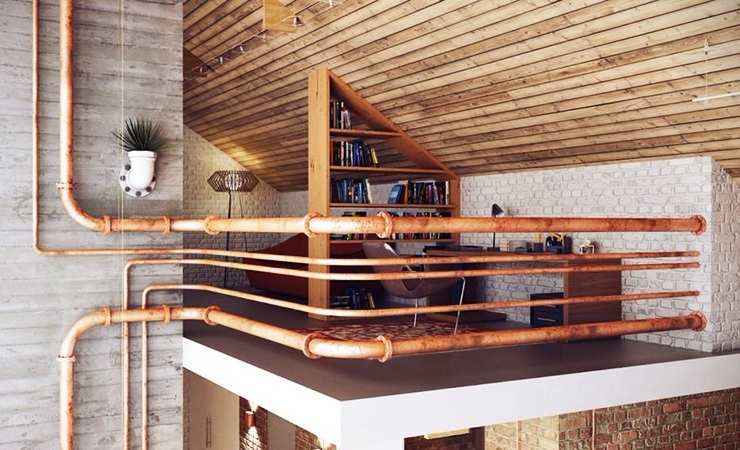
This is easier said than done and may create a lot of work re-routing the path of the pipes, but it can be done. One of my favorite instances of this method of hiding exposed pipes is to use them as a railing for a loft.
Just be careful they aren't hot water or steam pipes that will scald your visitors when touched.
You could also use ones running horizontally along the wall as supports for shelving, ways to hang potted plants indoors, or if there's enough of them you could paint some kind of mural on them that becomes more clear the further away from them you are.
The key is to get creative! Just don't interfere with fire sprinkler systems or anything safety related.
Leave Basement Ceiling Pipes to Create More Room
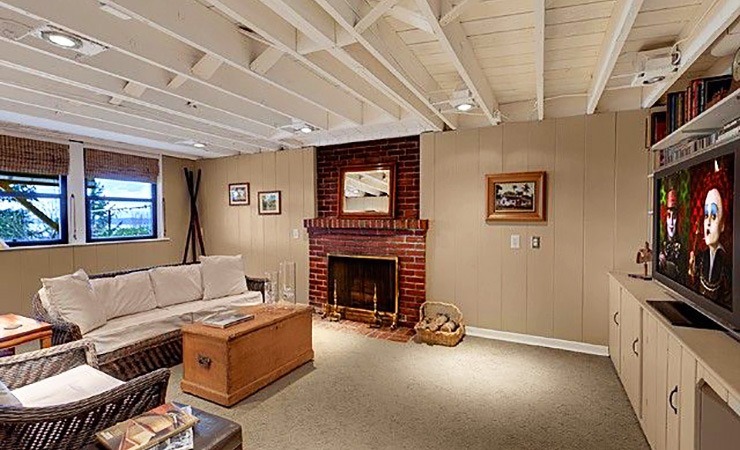
Most of the time these pipes will be recessed into the support beams of the floor above. You can't alter these to remove them, but rather than installing drywall for a ceiling to hide the pipes, you could make them prettier and leave the pipes exposed.
This will create the illusion of more vertical space in the basement, making it more comfortable.
The same goes for hiding duckwork with a soffit in a high ceiling room on the ground floor. Rather than loosing some of that amazing air space, you can purchase a much nicer strip of duct, like galvanized steel that doesn't rust and stays shiny and leave it exposed.
This generally will look much nicer than a random strip of boxed in piping.
Leaving wood beams exposed can feel modern or rustic, depending on how you play it. You can run extra boards between the beams as if there's double or triple the amount and install lighting between them.
There's lots you can do without losing vertical space. The psychological benefit is huge to having that space there.
Hide the Pipes Behind Furniture & Decorations
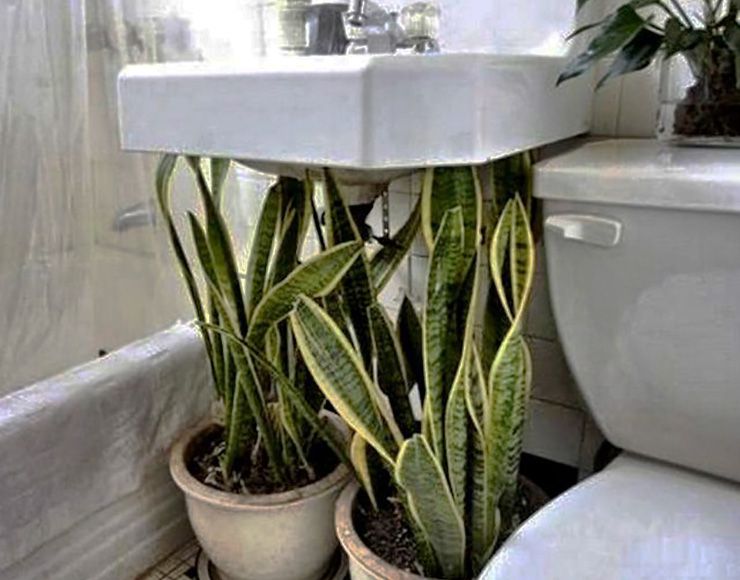
One of the simplest things to do is to decorate the room and arrange the furniture around hiding pipes as the core goal. You can use your kitchen table, sofas and couches, big potted plants, etc.
The idea here is that you can keep some of the pipes exposed on the upper half of the room, perhaps blending them into the walls with paint, while hiding most of it with your normal furniture. It's a lower effort way of bringing the visual distraction down a notch.
Turn Pipes Into Side Tables or Cat Trees

I mentioned building shelves onto the pipes. More examples of making them functional would be to build side tables into ones that are at the right height of your couch.
I've even seen really creative solutions like turning them into scratching posts for your cats, or even into big elaborate cat trees.
This way of hiding pipes will have your visitors amazed when they discover what you've done, and it will make your room more personable and relaxing.
It will have your personal touch, which is far better than following standard convention, in my opinion. It's how "space" becomes "place."
Turn a Vertical Pipe Into a Column
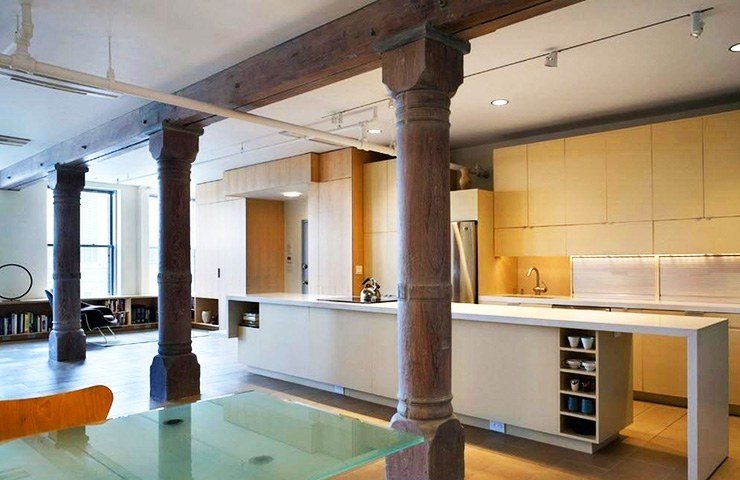
Say you have a room, like an upstairs bedroom, attic room, or bonus room above your garage that has a big pipe running vertically right up the middle of the room for no real good reason. Rather than trying to re-route it, you can build a column around it.
In this way you can hide the pipe and pretend it's a support beam like a load-bearing structure that has to be there. Nobody will question it.
You can then decorate it however you want, even adding shelving all the way around it, building a seating bench with storage under it around it, etc. The possibilities are endless depending on the location of the pipe.
How to Hide Outdoor Pipes
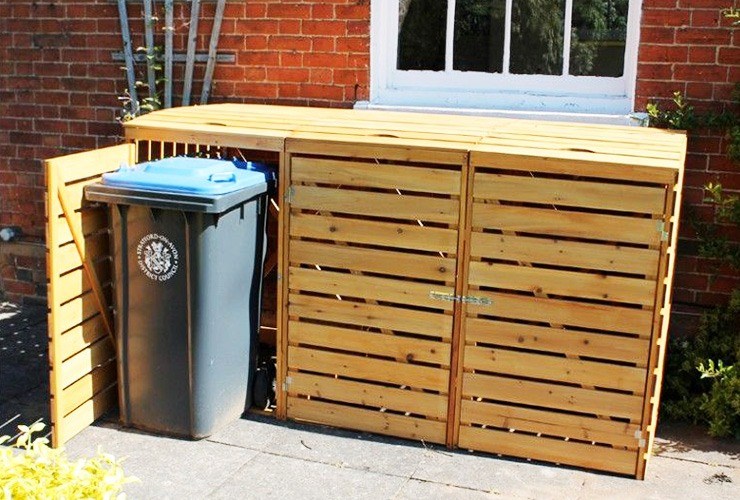
Exterior pipes on the outside of your home can feel unsightly too. Fortunately these usually run low to the ground and not much higher than our waist level. You can use most of the methods above, especially if they're near your patio. But there are other methods specifically for this scenario.
You can plant bushes to hide them but please take care that you don't let the roots damage the pipes over time. Also, don't plant the bushes if they're near a window so you don't create a place for a criminal to hide while they peer in and scout out locations.
You can build a storage box for your yard work or garden tools to place in front of the pipes. You can do the same with a nice garden hose reel. Placing anything functional in front of the pipes while painting the pipes the same color as the siding or bricks can hide them well.
You can also build trellises so vines can grow along it, giving you double the pleasure of not only covering the pipes but flexing your green thumb. Grow some berries and you've now hit the triple pleasure level.
Get Creative to Hide Exposed Pipes
The ideas above should be enough to get your creative juices flowing. There's all kinds of ways to do it, such as using a drop ceiling or any alternatives. Presenting these general methods is the most we can do because you'll need an individual solution to your specific scenario.
But with a little imagination and elbow grease, you can hide your exposed pipes perfectly.
You'll Also Enjoy:
- 14 Drywall Alternatives That Bring Life to a Dull Room
- 11 Bed Alternatives for Saving Space in Your Small Rooms
- 17 Bedroom Feng Shui Rules for Serene Relaxation
- 28 Kitchen Sink Ideas to Impress While Best Utilizing Your Space
- Standard Garage Size: Diagrams & Dimensions Up to 4 Car Garages
Editor: Rick Worst
 Rick is a home design consultant and enthusiast, whose life is consumed by all things home and garden. Started as a hobby, Worst Room has grown into an information and inspiration wheelhouse for professionals and home owners alike. Rick serves as owner and editor for our many content contributors. Learn more about Rick & the Worst Room operation here.
Rick is a home design consultant and enthusiast, whose life is consumed by all things home and garden. Started as a hobby, Worst Room has grown into an information and inspiration wheelhouse for professionals and home owners alike. Rick serves as owner and editor for our many content contributors. Learn more about Rick & the Worst Room operation here.
Decorating Exposed Pipes in My Small Half Bath
Source: https://worstroom.com/how-to-hide-exposed-pipes/
0 Response to "Decorating Exposed Pipes in My Small Half Bath"
Post a Comment